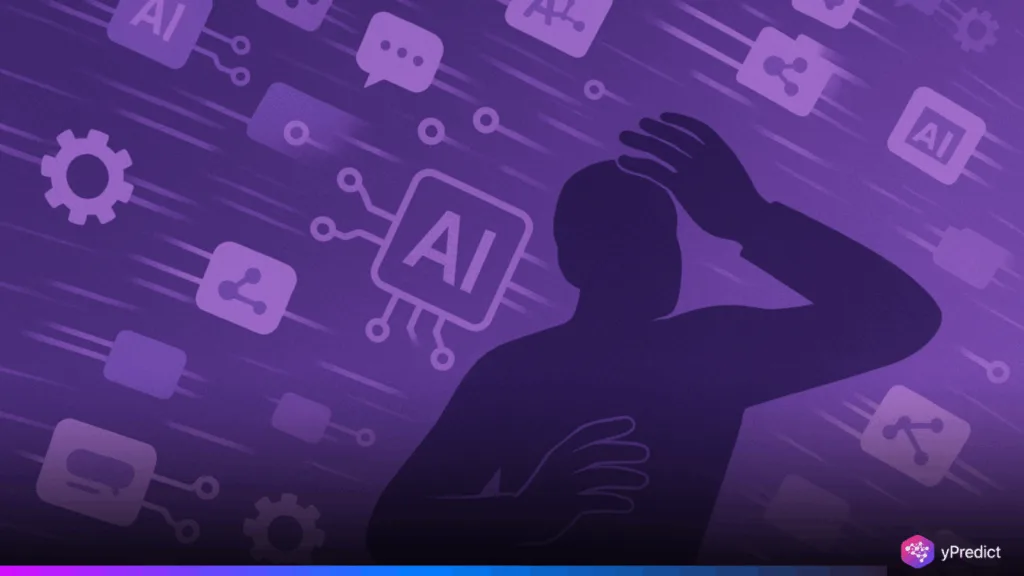
A new debate around the MIT NANDA report, The GenAI Divide: State of AI in Business 2025, has gained momentum after analyst Rohan Paul offered a fresh interpretation of its findings. The report’s headline claim, that 95% of enterprise generative AI pilots fail, sparked widespread concern about AI’s effectiveness in the corporate world. Yet, Paul argues that the statistic is often misread, applying only to brittle, custom-built pilots rather than overall AI adoption. His perspective draws attention to the rise of shadow AI, where employees use personal tools beyond official channels, driving real outcomes overlooked in enterprise statistics and budgets.
The “GenAI Divide” in Enterprise Deployments
The MIT research carried out in 2025 between January and June examines more than 300 implementations, 52 executive interviews, and 153 leader surveys. Its key conclusion that out of 100 generative AI pilots, a majority (95 percent) have failed, illustrates the major challenges in internalizing at scale. There is a high tendency for these pilots to become failures under the pressure of poor designs and failure to contextualize them, as well as failure to integrate better into regular workflows. Moreover, limited executive sponsorship often leaves projects underfunded or sidelined before real-world utility is delivered. The result is what the report calls the “GenAI Divide,” where only 5% of organizations achieve measurable benefits.
In practice, those successes emerge from adaptive, task-specific solutions that evolve continuously with user feedback. These systems differ sharply from rigid, custom-built models that cannot adapt to changing corporate needs. The divide ultimately signals that enterprises heavily reliant on proprietary development risk falling behind. Organizations embracing partnerships or flexible frameworks demonstrate a greater likelihood of long-term success, in stark contrast to the failures highlighted in the data. Paul’s interpretation emphasizes that the bleak failure rate is not reflective of generative AI’s overall performance but simply an indicator of the missteps companies face when focusing purely on in-house pilots rather than broader approaches to AI deployment.
The Rise and Impact of Shadow AI
Paul’s sharpest critique lies in exposing how shadow AI reshapes the real story. While official pilots falter, employees often bypass bureaucracy by adopting personal AI tools like ChatGPT or Claude to improve productivity. The report by MIT revealed that 90 percent of the surveyed staff currently subscribe to the corporation. Personal solutions as compared to 40 percent with licensed subscriptions by the corporation. This illustrates the extent to which shadow AI flourishes in accessibility, quickness, and adaptability so that workers can optimize drafting, data analysis, and customer support functions without requiring formal authorizations.
This grassroots movement delivers measurable, though often invisible, value. Financially, the MIT report notes that shadow AI contributes to annual cost savings between $2 million and $10 million per company, while reducing agency and outsourcing spend by about 30%. Yet, these gains frequently appear in vendor and operational line items rather than “AI program” budgets, making them harder for executives to track. For example, automating ticket resolution or invoice processing through shadow AI tools cuts reliance on business process outsourcing, but the credit rarely goes to AI teams.
Ultimately, Paul highlights this invisible layer of enterprise innovation. Instead of focusing narrowly on failed projects, he argues leaders should harness the momentum of shadow AI to align grassroots adoption with broader corporate strategies.
Bridging the Divide
Rohan Paul’s analysis reframes the MIT report’s alarming “95% fail” figure, showing it reflects narrow conditions rather than AI’s overall impact. By spotlighting shadow AI as a driver of real-world efficiency and highlighting vendor partnerships as deployment accelerators, his interpretation reframes the conversation around enterprise AI. The future may not lie in perfectionist, internal builds, but in cultivating flexible ecosystems that embrace both external expertise and employee-led innovation. To truly bridge the GenAI Divide, organizations must learn from the energy already within their workforce and elevate shadow AI into official strategy, transforming hidden productivity into recognized enterprise success.






